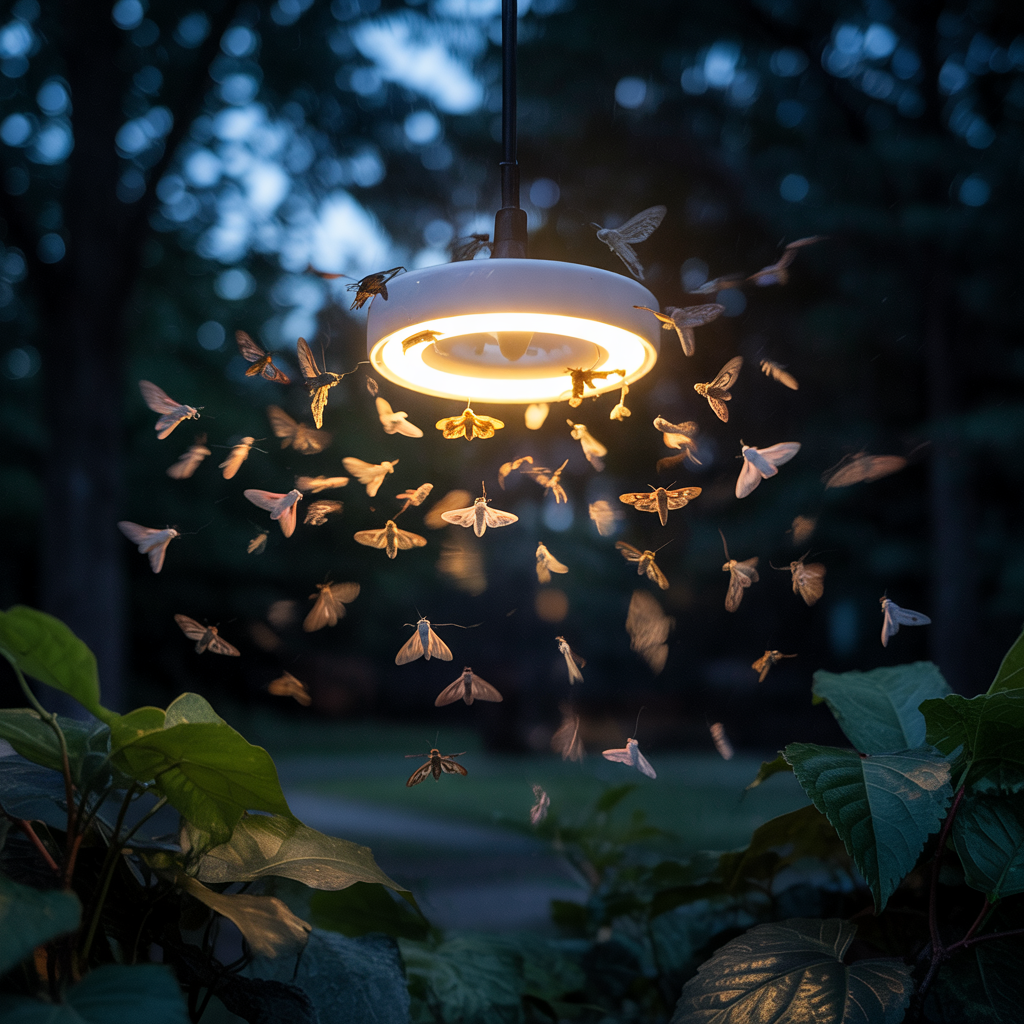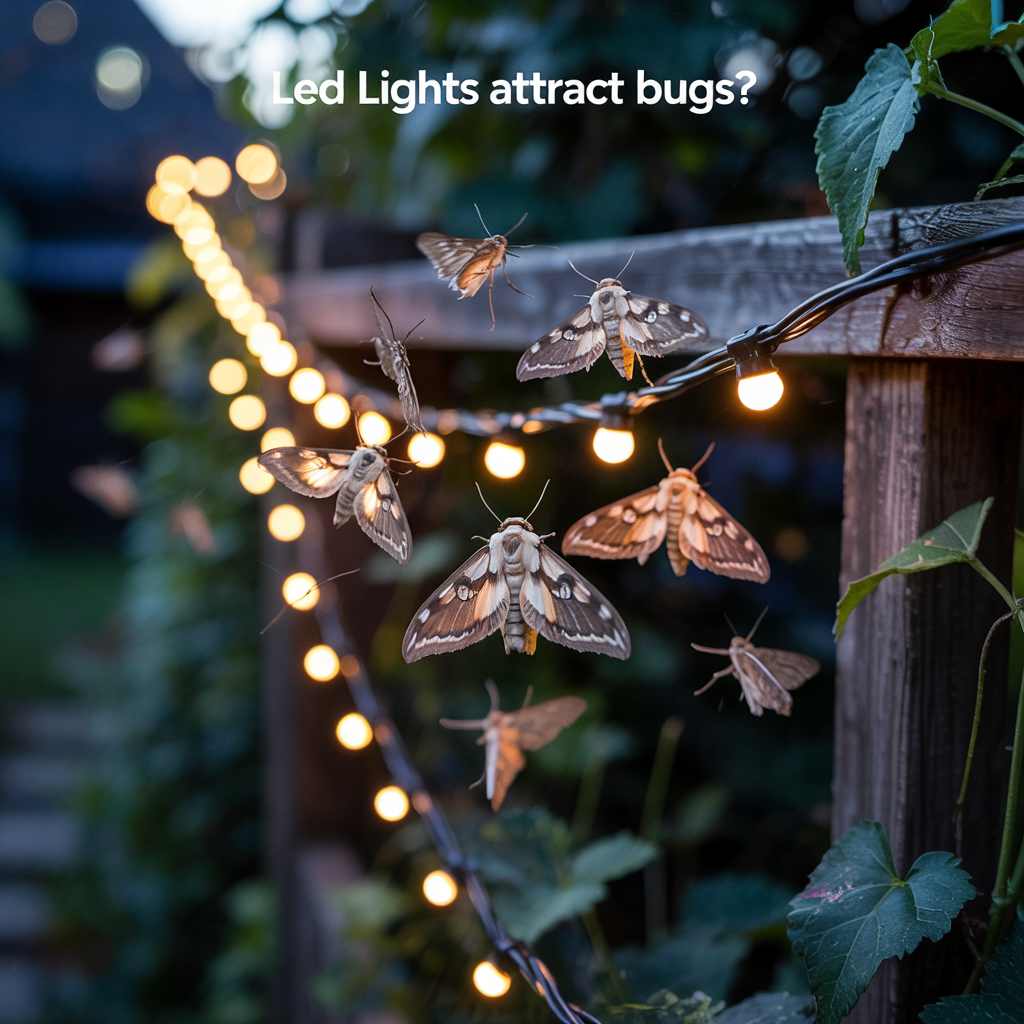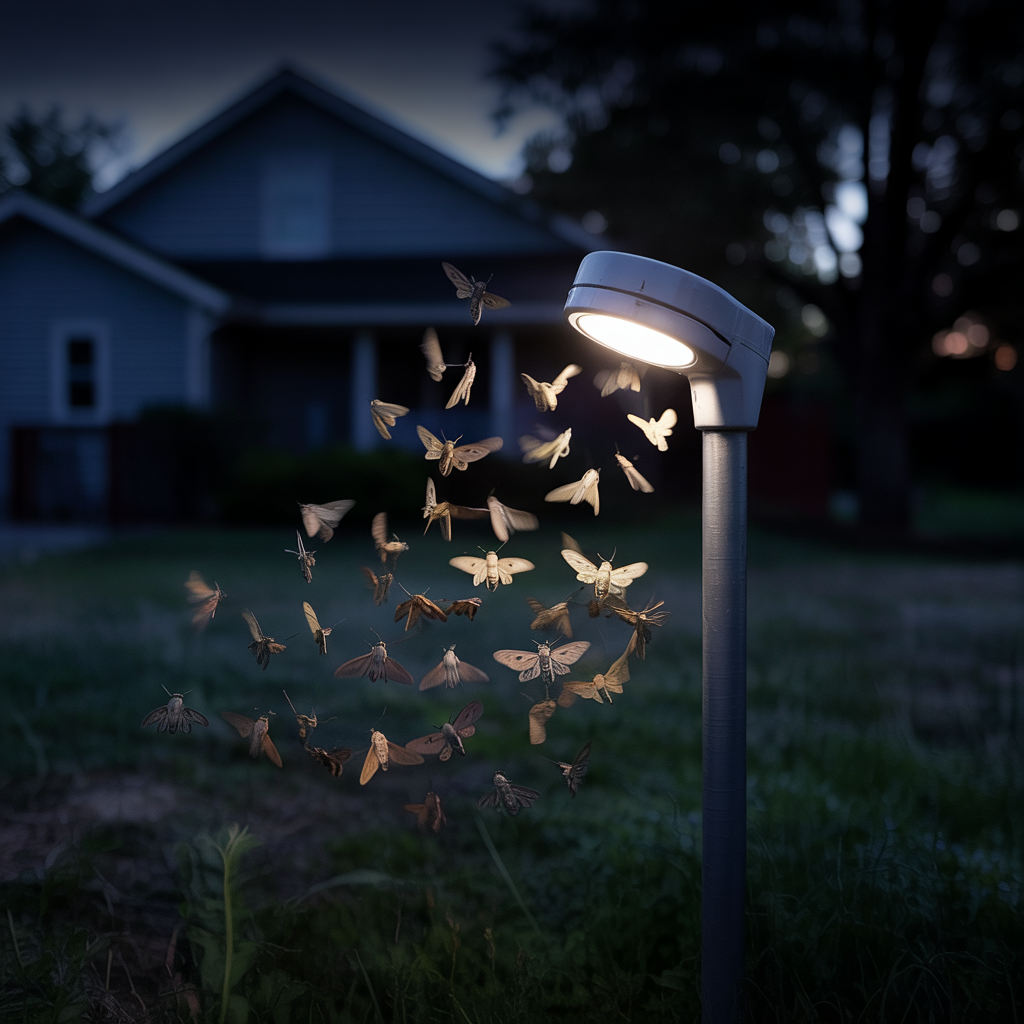Do LED Lights Attract Bugs? The Complete Guide
Do LED lights attract bugs? This seemingly simple question opens a fascinating world of insect behavior, light wavelengths, and the science behind attracting and repelling insects. In this comprehensive guide, we’ll delve deep into the intricacies of insect phototaxis (the movement of insects towards or away from light), explore the differences between various types of…
Do LED lights attract bugs? This seemingly simple question opens a fascinating world of insect behavior, light wavelengths, and the science behind attracting and repelling insects. In this comprehensive guide, we’ll delve deep into the intricacies of insect phototaxis (the movement of insects towards or away from light), explore the differences between various types of LED lights, and examine how these factors impact bug attraction. We’ll also look at alternatives and practical solutions to minimize insect attraction around your home or business. You’ll learn how different light colors and intensities affect insect behavior, discover why some insects are drawn to light while others aren’t, and ultimately, gain a thorough understanding of whether or not LED lights attract bugs.
Do LED lights attract bugs? LED lights attract fewer bugs than traditional lights because they emit minimal UV light and produce less heat. Warm-colored LEDs, especially yellow or amber, are the least attractive to insects. While not entirely bug-proof, LEDs are a better choice for reducing insect presence around outdoor lighting.
organism moves towards the light, while negative phototaxis means it moves away. Many insects exhibit positive phototaxis, meaning they’re drawn to light sources.
Do LED Lights Attract Bugs?
Why Are Insects Attracted to Light?

The exact reasons are still debated, but several theories exist. One suggests that nocturnal insects use the moon and stars for navigation, and artificial lights disrupt this celestial compass. Another theory suggests that insects are attracted to light sources because they mimic natural light sources like the sun or moon, leading them astray.
Read More: Upgrading Your Home Lighting: A Comprehensive Guide To Can Lights LED Retrofit
The Role of Wavelength
Different insects respond differently to various wavelengths of light. Ultraviolet (UV) light, for instance, is highly attractive to many insects. While visible light plays a role, UV wavelengths are often a significant factor in attraction.
LED Lights and Their Wavelengths
The Spectrum of Light
LED lights, unlike incandescent bulbs, produce light through electroluminescence. This allows for precise control over the wavelength of light emitted, influencing the degree of insect attraction.
Different Colors, Different Attractions
The color of an LED light significantly affects its attractiveness to insects. While warm white and yellow lights tend to attract fewer insects than cool white or blue, no color is completely insect-proof.
Intensity Matters
The brightness of an LED light also plays a role. Brighter lights attract more insects, regardless of color. A dimmer light, even if it’s a wavelength that typically attracts bugs, will attract fewer insects than a brighter one.
Comparing LED Lights to Other Light Sources

Incandescent Bulbs and Bug Attraction
Incandescent bulbs, with their broad spectrum of light including significant amounts of UV and infrared, are known to attract a considerable number of insects.
Read More: Cozy Bedroom Lighting Ideas: 15 Ways to Create a Dreamy Retreat
Fluorescent Lights and Insects
Fluorescent lights, although less attractive than incandescent bulbs, still attract some insects, depending on the type and color temperature of the bulb.
Do LED Lights Attract Fewer Bugs Than Traditional Bulbs?
Generally, yes, LED lights tend to attract fewer insects compared to incandescent and some types of fluorescent lights. This is because many LED lights emit less UV light, and manufacturers can adjust the wavelengths to minimize insect attraction. However, it’s crucial to choose the right type of LED.
Factors Affecting Bug Attraction to LED Lights

Ambient Light Pollution
The presence of other light sources in the area can influence bug attraction to your LED lights. If there’s already significant ambient light pollution, a single LED light may have less of an impact.
Location and Surroundings
The location of the LED light influences insect attraction. Lights placed near vegetation or sources of food for insects will attract more bugs than lights located in open, less vegetated areas.
Time of Year and Insect Activity
The season and insect activity levels play a considerable role. You’ll likely see more insect activity around LED lights during warmer months when insect populations are higher.
Types of LEDs and Their Impact on Insect Attraction
Warm White LEDs
Warm white LEDs, with a color temperature around 2700-3000K, tend to be less attractive to insects than cooler-toned LEDs.
Cool White LEDs
Cool white LEDs (5000-6500K) are generally more attractive to insects due to their higher blue light component.
Bug-Repelling LEDs
Some manufacturers now produce LEDs designed to repel insects. These often incorporate specific wavelengths or use other insect-deterrent technologies.
Minimizing Bug Attraction with LEDs
Choosing the Right LED Color and Brightness
Opt for warm-white LEDs with lower lumens for reduced insect attraction. Avoid overly bright or cool-white LEDs.
Shielding Your Lights
Use light shields or diffusers to reduce the amount of light escaping directly into the night sky. This reduces the distance the light is visible and the area it attracts insects.
Using Motion Sensors
Motion sensor LEDs only illuminate when necessary, minimizing light exposure and therefore insect attraction.
Other Methods to Deter Insects
Natural Repellents
Planting certain plants known to repel insects around your property can provide an additional layer of protection.
Insect Screens and Nets
Using insect screens on windows and doors can prevent insects from entering your home, even if they’re attracted to outside lights.
Regular Cleaning
Keeping your home clean and free of food crumbs and spills reduces the attractiveness of your space to insects.
The Benefits of Using LEDs
Energy Efficiency
LEDs consume far less energy than incandescent or fluorescent bulbs, saving money and reducing your carbon footprint.
Long Lifespan
LEDs have a much longer lifespan than traditional bulbs, reducing replacement costs and inconvenience.
Versatility
LEDs are available in various colors, shapes, and sizes, offering flexibility in lighting solutions.
Limitations of LEDs in Insect Repulsion
No Guarantee of Complete Repulsion
Even the most insect-repelling LED lights won’t completely eliminate insect attraction. Some insects will still be attracted, albeit fewer than with traditional bulbs.
Cost Considerations
While LEDs are energy-efficient in the long run, the initial investment can be higher than for incandescent or fluorescent bulbs.
Are LED Lights Completely Bug-Proof?
No, no light source is completely bug-proof. Even the most insect-repelling LEDs will still attract some insects, albeit typically fewer than traditional bulbs. The key is to understand insect behavior, choose appropriately, and use supplementary measures to minimize insect attraction.
Frequently Asked Questions
What wavelengths of light are most attractive to insects?
Ultraviolet (UV) light and blue light are particularly attractive to many insects. The specific wavelengths that attract insects vary depending on the insect species.
Do all types of LEDs attract bugs equally?
No. Warm white LEDs tend to be less attractive than cool white or blue LEDs. The color temperature and intensity significantly affect insect attraction.
Can I completely eliminate insect attraction with LEDs?
No. While LEDs can significantly reduce insect attraction compared to other light sources, complete elimination is usually not possible.
What are some alternatives to LEDs for minimizing insect attraction?
Yellow sodium vapor lamps are sometimes used, as insects are less attracted to them. However, these are less efficient and environmentally friendly than LEDs.
Are there specific LED bulbs designed to repel insects?
Yes, some manufacturers produce LEDs designed with insect-repelling wavelengths or other technologies.
What are the best ways to shield or diffuse LED lighting to reduce insect attraction?
Use light shields, diffusers, or direct the light downwards to minimize light spillage upwards into the night sky.
How effective are motion sensor LEDs in reducing bug attraction?
Motion sensor LEDs can be effective, as they only illuminate when needed, reducing overall light exposure.
Why do insects still come to light even after minimizing attraction?
There are many factors influencing insect behavior. Other light sources in the area, the surrounding environment, and insect populations all play a role.
Final Thoughts
The question of whether LED lights attract bugs is complex. While LEDs offer a significant reduction in insect attraction compared to traditional incandescent bulbs, they are not completely insect-proof. The type of LED, its color temperature, intensity, and location all play a critical role. By understanding insect phototaxis, choosing the appropriate LED type, and employing supplementary methods such as light shielding and natural repellents, you can significantly minimize the number of insects attracted to your outdoor lighting. Remember, selecting warm-white LEDs with lower brightness, strategically placing them, and using light shields can significantly improve your outdoor environment. Don’t let the bugs win – choose wisely and create a bug-friendly outdoor space!

